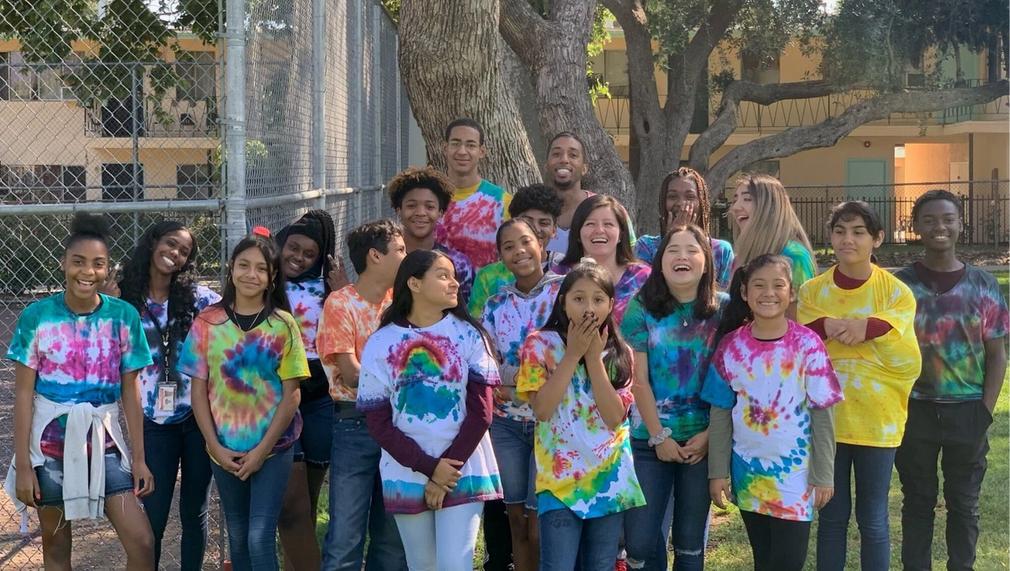Youth of Promise
There are two Pasadenas. The city has one of the largest wealth disparities in California, and this disparity traps communities in cycles of poverty, violence and incarceration. Flintridge Center works to break these cycles through the Youth of Promise program, an afterschool enrichment program that invest deeply in youth exposed to trauma and adverse childhood experiences. We know that when we provide care instead of punishment and opportunity instead of incarceration, youth will realize their full potential.

In which areas of Los Angeles will you be directly working?
San Gabriel Valley
What is the problem that you are seeking to address?
Pasadena ranks second in the largest income gap become richest and poorest households among California’s 50 largest cities. In 2019, Pasadena Unified School District identified over $10.1 million in long-term cuts. This disparity and depletion of resources acutely impacts Flintridge Center’s target community of Northwest Pasadena, where 35-50% of families live in poverty and youth disproportionately experience trauma and adverse childhood experiences (ACEs). The COVID-19 pandemic exacerbated these inequities: Pasadena saw an 85% increase in gun violence in 2020, and a Flintridge Center survey indicated that 70% of families participating in the Youth of Promise (YOP) program lost income. A focus group with YOP youth participants revealed that 90% of youth see someone arrested weekly; 70% see drug use daily; and 50% witness a fight weekly. Without deep investment in youth exposed to trauma and ACEs, cycles of poverty, violence, and incarceration will be perpetuated in Pasadena.
Describe the project, program, or initiative that this grant will support to address the problem identified.
This grant will support Flintridge Center’s Youth of Promise (YOP) program, an afterschool enrichment program that breaks down barriers faced by youth exposed to trauma and adverse childhood experiences (ACEs). All youth receive individualized case management services that utilize an asset-based approach to goal planning and are responsive to youths’ unique needs. Core program elements include: mentoring, academic support, clinical mental health support, leadership development opportunities, community service experiences, life skills and family engagement activities that strengthen familial protective factors. The program is unique in its participant population of youth and families most impacted by Pasadena’s inequities and systems of poverty, violence and incarceration. The program specifically targets Pasadena youth at high-risk of justice involvement – as determined by: credit deficiency; failing grades; chronic truancy; or exposure to multiple ACEs including familial incarceration – and youth diverted to our services by the Pasadena Police Department in lieu of justice involvement. Through this grant, we will launch a stipend initiative for YOP participants in which youth receive modest financial compensation for each hour of program engagement. Beyond incentivizing engagement with program activities, stipends compensate youth for investing in themselves. Financial stipends are an evidence-based intervention that support positive social emotional outcomes for youth.
In what stage of innovation is this project, program, or initiative?
Expand existing project, program, or initiative
Approximately how many people will be impacted by this project, program, or initiative?
Direct Impact: 100
Indirect Impact: 500
Describe how Los Angeles County will be different if your work is successful.
Exposure to trauma and adverse childhood experiences (ACEs) can cause severe or persistent harm, also known as toxic stress that disrupts brain development and positive self-identify. ACEs have a deep impact on violence victimization and perpetration, and community health (CDC-Kaiser). The Youth of Promise (YOP) program builds resilience in youth exposed to ACEs, while simultaneously building protective factors that create a safe and nurturing community. YOP provides pro-social alternatives to incarceration and pathways to opportunity that break cycles of poverty and violence, ultimately resulting in increased neighborhood safety, lowered prevalence of trauma, and lower crime rates. By establishing this impact in Pasadena, we advance equity in a uniquely disparate community of Los Angeles County. YOP provides a roadmap for a Los Angeles which invests in opportunity instead of incarceration, and in which all youth have equal access to a safe environment to discover, explore, and play.
What evidence do you have that this project, program, or initiative is or will be successful, and how will you define and measure success?
YOP is modeled after the Eisenhower Quantum Opportunities Program (QOP), an evidenced-based framework that posits that a combination of educational support, service opportunities, youth development opportunities, and financial stipends will improve academic and socioemotional skills. While YOP has been in operation since 2015, financial stipends will be a new initiative made possible by this funding. Outcomes for the 2019-2020 school year include: • 85% of youth did not enter or return to the justice system • 90% of youth decreased or did not demonstrate high-risk behavior, demonstrated by decreased discipline reports and noted changes in behavior. • 85% of youth participating for one year or more demonstrated improvements in interpersonal communication, conflict resolution and self-management. The new stipend initiative will be evaluated by measuring 2021-2022 outcomes against the above metrics and evaluating youth engagement and retention in program activities.
Which of the PLAY metrics will you impact?
Prevalence of trauma and adverse childhood experiences
Crime rates
Perceived neighborhood safety
Indicate any additional LA2050 goals your project will impact.
LA is the best place to LEARN